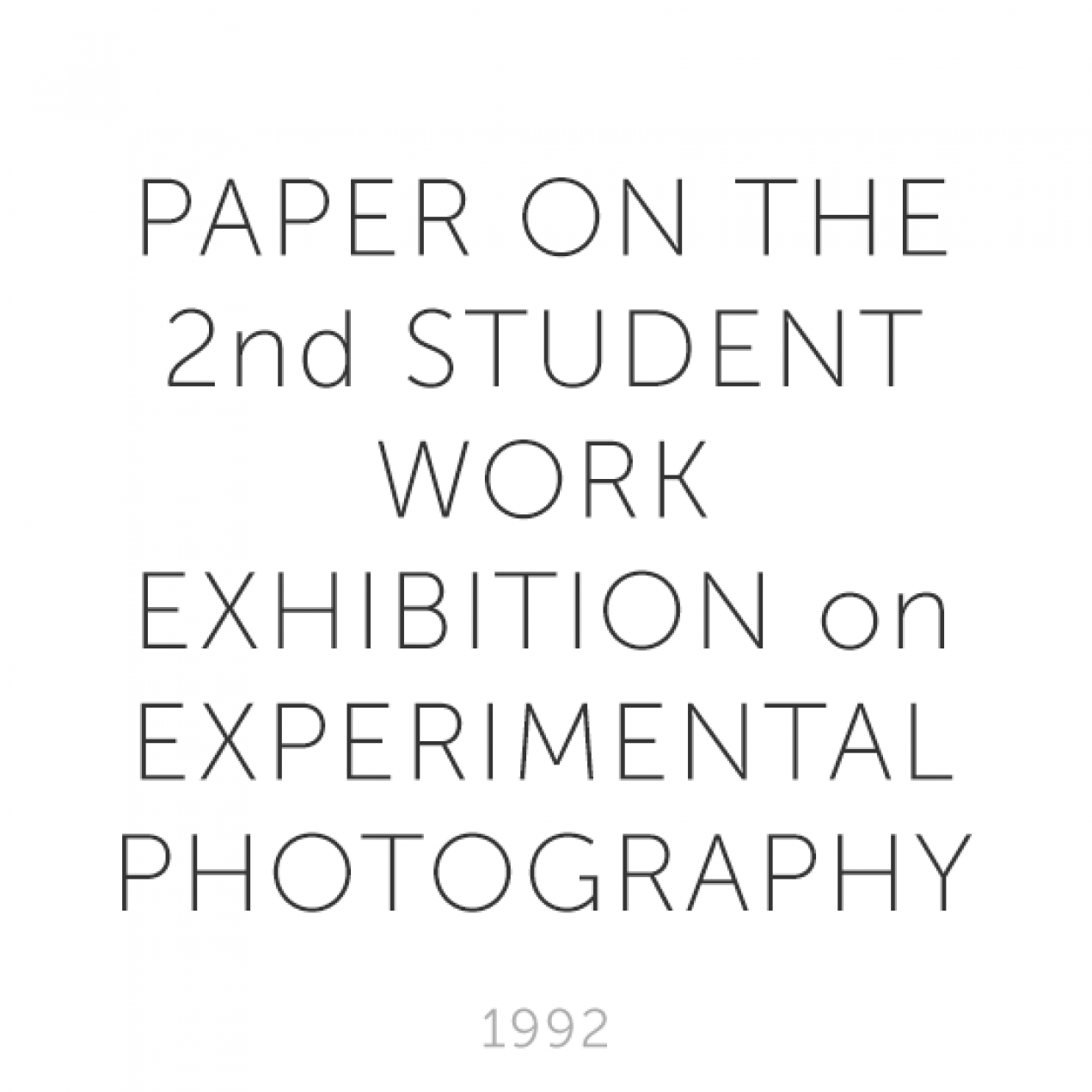* Sanat Çevresi Magazine, April 1992, Issue: 162
The second “Experimental Photography Student Works Exhibition”, the first of which was held in December 1989, is open for viewing at the Mimar Sinan University (MSU) Osman Hamdi Bey Exhibition Hall between 08-22 April 1992. The exhibition opens on April 08, 1992, Wednesday, at 16.30.
The second exhibition consists of approximately 50-60 black / white print and color print work by 27 students who followed the Experimental Photography discipline during the 1990 and 1991 academic years.
One of the most important features of the second exhibition is the project realized by the participation of 8 students wherein the “The Reality Dimensions of Photography” are scrutinized. The project consists of black / white prints of 8 self- portraits in true human dimensions (1:1). The 1:1 prints within the scope of the project are in harmony with the objective structure of the locations they are in, at the exhibition hall.
The exhibition is designed and realized by the MSU Faculty of Fine Arts, Department of Photography Experimental Photography discipline academic staff, Assoc. Prof. Ahmet Öner Gezgin.
Paper on the “Experimental Photography 2nd Student Works Exhibition”
Exhibition: 08-22 April 1992, MSU Osman Hamdi Bey Exhibition Hall.
Up until the second half of the 18th century, aesthetic theory was influenced by philosophy, particularly ancient philosophy. Aesthetic theory, along with the Sturm und Drang – Depression Era, which emerged in the years following the Romantic Movement in German literature from the second half of the eighteenth century, began to move away from the usual objective criteria towards subjective interpretation. Thus, the artist’s personal experiences in the field of literature, music and plastic arts have begun to form the semantic structure of the work of art.
When Dada’s strict artistic approach based on the principle of saving the individual from the captivity of mind was replaced by spiritual self-motion, new explorations of reality extending from expressionism to fantasy and gradually to experimental dimensions also started. The reflection of these explorations on photography is equivalent to the developments in the technological structure of the tool: In the course of the development of cinematography, the experimental activities of Eadveard Muybridge (1830-1904) in the artistic context, the negative/positive prints based on Colotypie management performed by Nenry Fox Talbot in 1835, Man Ray’s rayograms post-1920s, Moholy Nagy’s photograms, are the products of experimental research directed at the new internal reality of the object, apart from the perceived reality.
Experimental photography, which finds the superficial visuality or the plain-semantic photographic displays of documentary photography insufficient in its approach to art, targeting the achievement of interdisciplinary communication that pushes the boundaries of photography with its artistic language based on thought, aims to keep a constant relation between theory and application on the agenda in our country. Beyond any doubt, it is the documentary function of the photography that conveys the closest approach to objective reality among the mimetic arts. The desire of the plain-semantic structure to re-present objective reality, drew the intense narrative-based, rich appearance away from the regular aesthetic dimension. Furthermore, this situation also corroborates the thesis of many aesthetic experts; “Why bother producing art if the same reality -life itself- is to be repeated.” An approach that does not give the subject an opportunity to imagine a moment in a specified slice of time, while an act is documented at that moment, loses its aesthetic characteristic and acquires documentary characteristic overall. In order for a work of art to connect to the rules of reading general art history and transition to the status of an artwork, it must be stripped down from the contents of that work of art and an aesthetic legibility should remain. Only then can he connect to the rules of reading art and refer to art.
The objective of experimental photography in education is to reach the original artistic message by using all the technological and aesthetic possibilities of photography and other plastic arts. Education is made up of 5 different features in terms of content:
- Personal views are emphasized,
- A precise assessment and judgment are avoided,
- A certain plan is not adhered to,
- A certain thought or understanding is not attempted to be put across,
- The basic principle of the artistic language that is aimed is the creative idea, determined as thesis/hypothesis or thought.
Since photography is a two-dimensional documentary determination of the multidimensional objective reality, experimentalism in the works exhibited can be evaluated at two different levels:
First is the abstract-expressionist plane where photography uses all technical, aesthetic, semantic and pragmatic opportunities of the tool by surpassing the objectivity of the objective image.
The second is the conceptual plane based on the concept in which the photography is basically maintained as infrastructure or as an auxiliary element.
Naturally, it cannot be expected that all of the students attending the experimental photography class become high-level artists. In this case, raising people who are forward thinking, open to breakthroughs, and who are tolerant is one of the other important goals of the class.
April 1992







